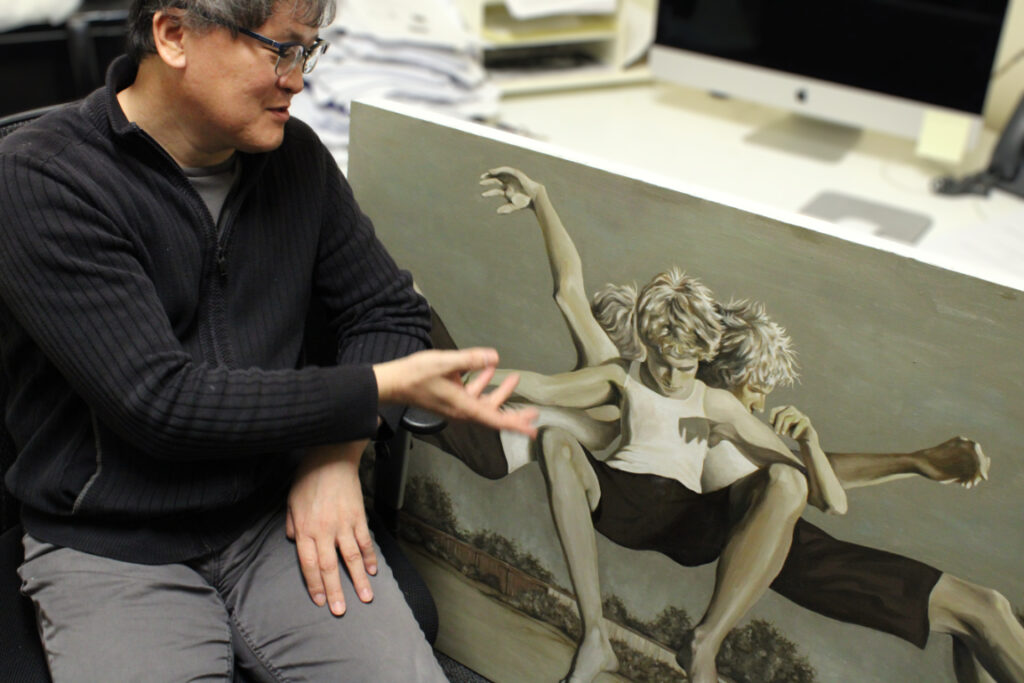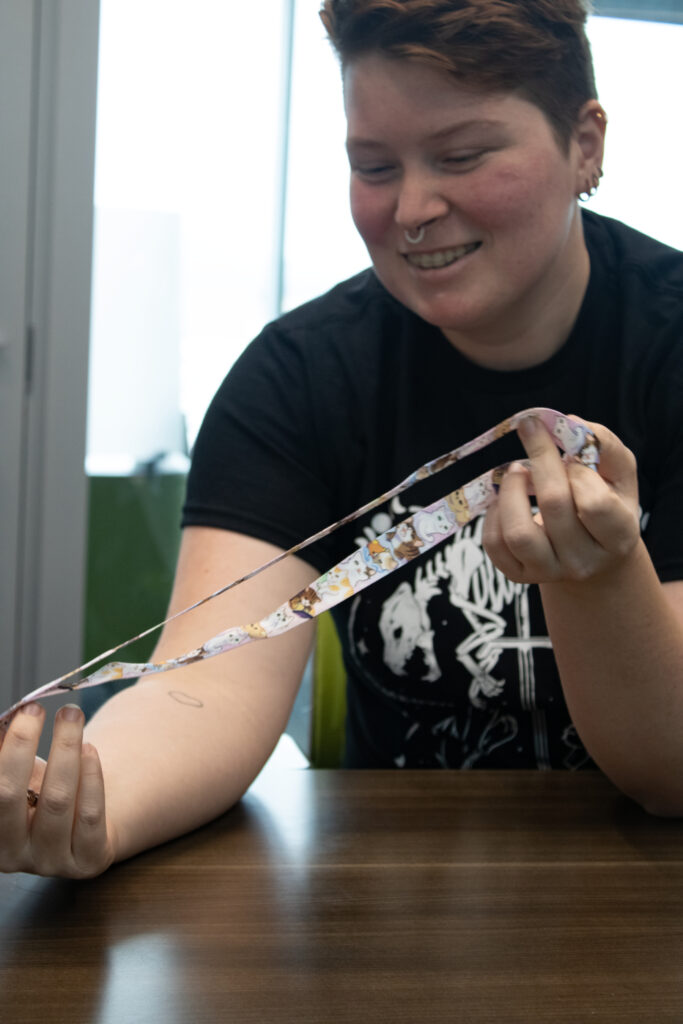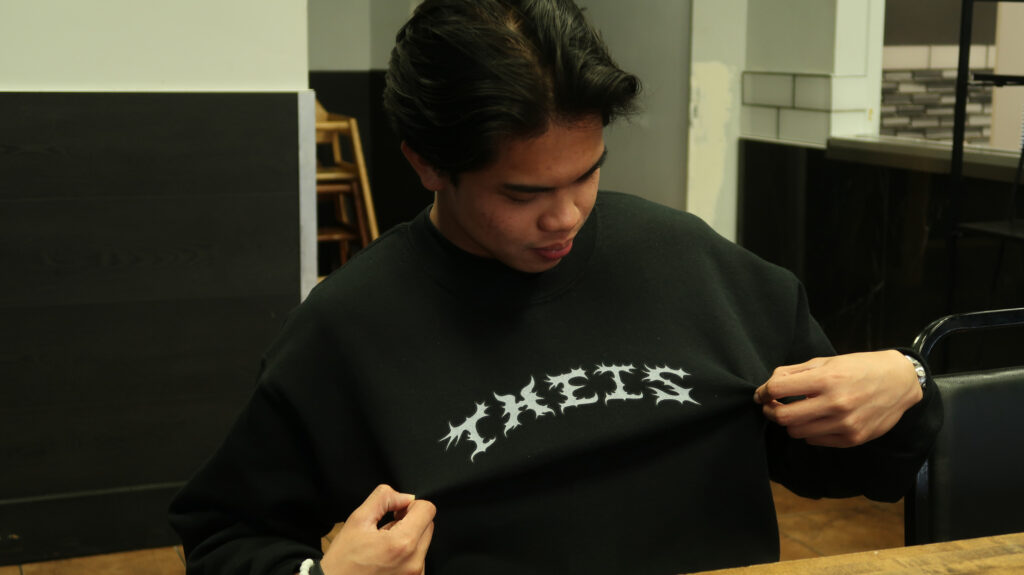As college students, there’s one thing that is almost always on our minds: money. Whether you’re a part-time student working to pay for your education or a full-time student hoping to get a lucrative career out of your degree, finance is one of the biggest concerns you would face. This can be a stressful and exhausting experience.
Despite past stigmas, many students are turning to creative work as a way to supplement their incomes, build successful businesses and make money while fitting their schedules.
As a student, having a job often means you’re constantly on the go, balancing long shifts and late nights. Unsurprisingly, the desire for flexibility in the job market has increased. According to a 2021 study published in the Harvard Business Review, in which 5,000 people from around the world were surveyed, “59% of respondents reported that ‘flexibility’ is more important to them than salary or other benefits…” Though this study targeted white-collar workers, the results do seem to reflect a general cultural shift as entry-level jobs are increasingly advertising “flexible” hours and scheduling.
The times have changed, and gone are the days of starving artists and deadbeat poets. Modern technology and societal shifts have made monetizing creative work both viable and accessible. It’s easier than ever to get your work out there and make money off of creative passion projects. Things that could previously only be done as hobbies can now be turned into profitable and sometimes even thriving businesses, whether you’re looking to make a career out of it or just make some money on the side.
As a student, you still need money, and you want to be able to make money in a way that fits your busy schedule and lifestyle. Some students have managed to create successful businesses by getting creative. Literally.
But what does it take to monetize your creative projects? Where do you start? How do you do it? And is it something that you should consider pursuing?
Profitable passions
First, what is creative work? And what does it mean to monetize it? While there isn’t any official definition, most sources generally label it as any kind of work that requires creative effort, whether it’s performance, fine art, design, music, filmmaking, or writing. To monetize it means to make money from doing it. Anything can be considered creative work, and it can be monetized: oil paintings, stop-motion animations, crafting unique and eye-catching wooden chairs.
Creative work is a broad category, and there are many ways you can make money. For those who prefer traditional fine art, Palomar College art professor Bo Kim has a few suggestions.
“For painters, really, there are two main ways to get financial security. Number one is teaching, it’s becoming more scarce, but it’s still out there. Number two is selling your work,” said Kim. Teaching remains a viable option for those worried about having a steady income, it’s also an option available to a variety of other creative fields, such as dance and theater. While it may not be as glamorous as selling your work, it is a tried and true way to ensure stability as a creative.

Professor Bo Kim displays one of his students art work. (Photo by Jordan Good)
While selling your work can be more challenging, it has become a lot more accessible in recent years thanks to social media and a variety of online platforms. Palomar student Tyler Talboys has managed to build a reasonable income by selling her work on Etsy.
She began her shop more than four years ago after receiving advice from a fellow artist at a convention. When she noticed her shop was beginning to gain traction, she decided to drop out and invest in expanding her business full-time. Now she is continuing her education while running her shop part-time, selling alternative apparel and commissioned artwork.
“For a long time it was casual, I would just sell things to my friends and stuff, but as time went on, a lot of people were interested so I decided to open an online store…” said Talboys.
Platforms like Etsy and Shopify have made starting an online business for your art a slightly more streamlined task, but it does require a substantial amount of effort. Creative work is still work.
“Keeping up with Etsy’s rules is the hardest thing, they’re very strict if you want to keep your star seller badge,” Talboys said. She explained that Etsy’s policies change frequently and maintaining “star seller” status is essential to succeeding on the platform. “Even a 4-star review could get you taken off the star seller list, because anything less than a 5 is treated the same as a 1-star,” Talboys added. Running her Etsy shop requires an active effort on her part: maintaining customer satisfaction, assuring quality and making sure her products get delivered are some of the primary responsibilities she is faced with on a daily basis.

Palomar student Tyler Talboys shows off one of her artwork that she sells on Etsy. (Photo by Jordan Good)
Going with a more analog approach to selling your work is also still a reasonable option. Talboys often sells her products in person at events such as conventions and makers’ markets. Kim suggested art galleries as a way to sell fine art, expressing that work consistency is important to selling successfully.
“Even if they like your work, what they need to have is the productivity… a lot of times galleries are kind of like job sites, artists are always looking for galleries, and galleries are always looking for artists,” Kim said. He also emphasized that artists explore galleries and form relationships with the owners and operators.
However you choose to approach selling your work, consistency and commitment are key. You may need to invest a substantial amount of time or even money into achieving success. Just like more traditional businesses, success in creative work does not often come overnight.
Marketing is everything
For those looking to profit off their creativity, one of the biggest factors to success is marketing. Every business needs someone to buy. This is often one of the biggest challenges for students, in particular, when it comes to monetizing their creative work, according to Palomar marketing professor Mary Cassoni.
“If it’s not awareness, meaning they don’t know you exist. Then the problem is they know you exist but don’t know what you are… many students genuinely already know this information,” said Cassoni. “Most of them have done the research. It’s just putting it together into a cohesive strategy is hard for them.”
Also, having a target demographic and connecting with them is a key factor to success. Every business needs buyers, and in the case of creative work, having a niche and building a strong, loyal customer base within that niche is something several sources acknowledged as a key factor.
“We all want to think that we’re selling to everyone, but in reality you have to understand that people have a variety of tastes and differences, especially when it comes to things that are creative,” added Cassoni. “For my students, I try to help them identify the right person; what are the challenges they’re facing? Where do they hang out? That sort of thing is important. In general social media, friends, and family are great places to start.”
Palomar alumni Tim Angeles found his niche within his faith. Angeles recently launched his faith-based streetwear brand “Theis” with more fashion-conscious Christians in mind. “We looked at other Christian streetwear brands and many were interchangeable. You could change out the brand names and designs and you wouldn’t be able to tell the difference,” he said. “We wanted to stand out within that niche and really create designs that were more unique.”

Tim Angeles shows the logo of his company, “Thesis,” on his sweatshirt. (Photo by Jordan Good)
Several sources, including Angeles and Cassoni, also mentioned the importance of social media. Platforms like Instagram and TikTok are great ways for artists to get exposure and start expanding their customer base beyond their immediate proximity. However, word-of-mouth recommendation generally remains the most consistent way to build your audience.
Struggles and stigmas
Making a career off of creative work isn’t easy. Many students are still haunted by the ghost of an old stereotype—the starving artist. “It’s gotten better but I still see students, especially if they are pursuing painting, it scares them. I see some students turning away from it for fear of financial instability,” said Kim.
For years art and creative work have been unreliable career paths for a variety of reasons. Before the invention of the Internet, achieving success provided more of a challenge and even great artists could often fall into financial trouble due to lack of consistent payment or recognition.“Ultimately, I cannot be responsible for their livelihood, I do my best to encourage their talent and assure they have what it takes to become a competitive artist, but it’s still their choice and you have to assume there might be a bumpy road,” said Kim.
Also, creative work can often be time-consuming, and not everyone has the time to commit to a side hustle. Palomar student Eva Soloff stopped taking commissions for her highly detailed paintings. “I work full time, so it definitely takes too long to do it as a side business,” she said.
Talboys also spends a significant amount of time investing in her Etsy business, between packaging and shipping orders as well as attending conventions where she sells her work. Angeles is taking a break from his studies in order to put more effort into his clothing brand.
There is also the issue of ownership. Palomar student and digital artist Lydia Nguyen talked about the potential struggles with people taking art and using it without permission. “People have legit, traced my art and reposted it. It was a small page, but if it was a bigger page, I wouldn’t have really been able to fight it because they have a larger audience,” said Nguyen.
She added that artists need to be cautious when posting fan art of licensed properties. “Sometimes you have to be careful when making art of shows or things like that because if you use the actual name you could be potentially copyright striked on some platforms,” she said.
A.I. art is also a growing concern among several sources. A.I. art generates artwork by gathering information and often directly taking existing works to algorithmically create a new piece. This means that often artists’ work is stolen for the use of A.I. and because it is still a new technology, and there is currently little regulation for it. A.I. art is leaving many artists worried that their hours of labor can be replaced or replicated with the push of a button.
“AI will destroy us all,” said Kim jokingly.
Surely there’s a lot to be worried about as someone making their career in creative industries. Despite the struggles, the future may not be so bleak for creatives.
Silver linings: the future of creative work
Many creatives can find work through a variety of avenues, even aside from starting their own businesses. Resources like Upwork, a job site for freelancers, make finding work for creatives easier than ever. Social media and influencers have largely changed the landscape of how people can gain recognition online, expanding the potential for making money creatively. Though still present in the minds of many aspiring artists, the stigmas around creative careers are slowly clearing away.
As for A.I. art, Cassoni offered a more optimistic perspective on the emerging technology and artists. “I see there being a backlash to things like ChatGPT. One thing I’ve noticed in my students is that Gen Z is really down on things that are mass-produced,” she said. “There is an increased desire for uniqueness. I think A.I. is just going to create more of a need for things that are genuine.
“Thanks to various platforms, selling has been democratized, and many younger people prefer thrifting and supporting small business to fast fashion. I think going forward human creativity and things that are human-made will become a huge selling point.” •






Recent Comments